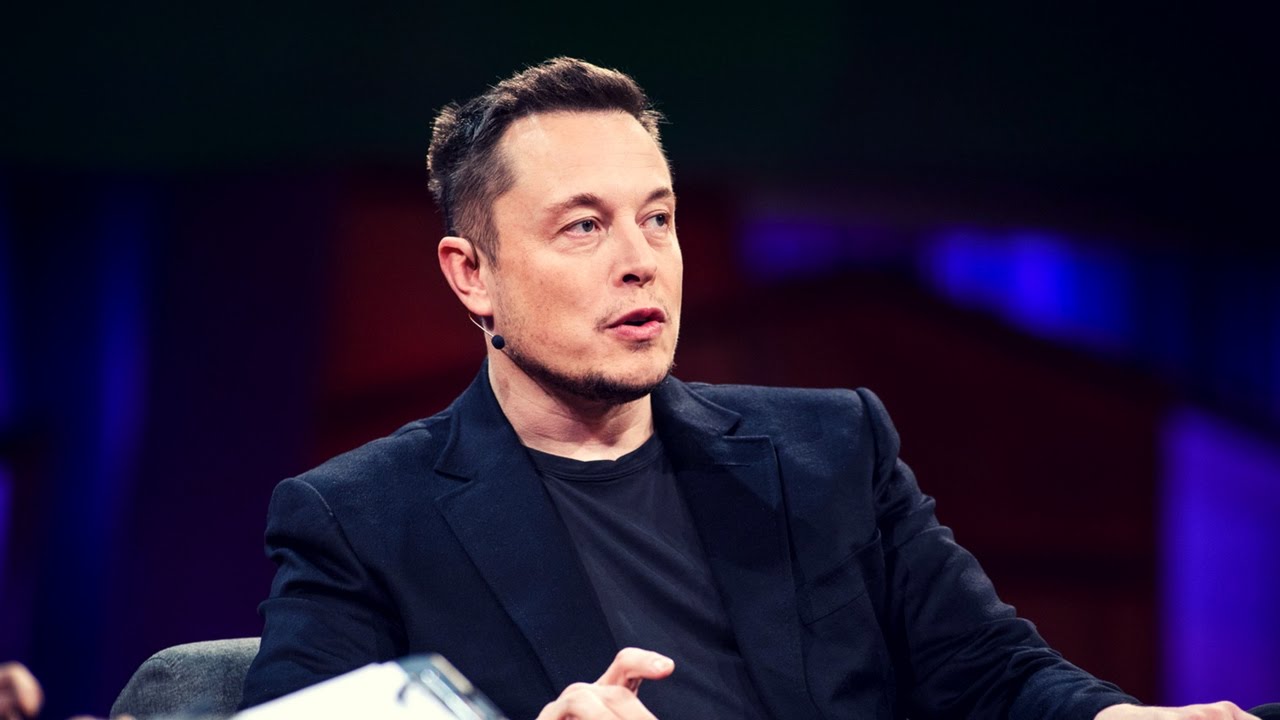

News
Elon Musk quietly donates $480K to help Flint, MI schools get access to clean water
School buildings in Flint, MI will soon get ultraviolet water filtration systems, thanks to a $480,350 donation by Elon Musk through the Musk Foundation, a private foundation founded by Elon and Kimbal Musk back in 2002. The installation of the water filtration systems is expected to be completed by January 2019.
Elon Musk’s donation to Flint’s schools was announced by the district on Friday. In a statement to MLive News, Derrick Lopez, the Superintendent of Flint Community Schools, noted that the new water filtration systems would play a notable part in helping students regain access to safe, clean water. Lopez further stated that Musk’s donation is enough to pay for the filtration systems in all 12 school buildings in the city, as well as the district’s administration building.
“We are deeply grateful for the generosity and the budding partnership between Flint Community Schools, the Musk Foundation and Elon Musk. The new water filtration systems will be instrumental in helping our students return to the normalcy of what should be a fundamental right: having access to safe, clean water from water fountains in their school,” Lopez said.
The UV water purification method within the filtration systems will disinfect lead and bacteria coming from water pipes, allowing students in Flint to safely drink from school water fountains once more. Flint school board president Diana Wright thanked the Musk Foundation for its donation, stating that it ensures that “students in Flint Community Schools have access to safe drinking water at the source — in drinking fountains — by way of the same type of water filtration system used by hospitals and colleges in Flint.”
Elon Musk’s donation to Flint was acknowledged on Twitter by the official Flint Schools account, as well as young activist Mari Copeny, better known as “Little Miss Flint.” Musk, for his part, noted that he hopes he could do more to help in the future.
For all you saying "wheres Elon", he's been here and helping. Thank you to my buddy @elonmusk for helping take care of #FlintKids https://t.co/66EfeoL5nv
— Mari Copeny (@LittleMissFlint) October 5, 2018
You’re most welcome. Hope to do more to help in the future.
— Elon Musk (@elonmusk) October 5, 2018
Elon Musk’s initiatives in Flint came to light back in July when he pledged on Twitter that he would be helping the residents of the city get access to clean water. Since his announcements then, as well as his suggestion of a “barnstorming weekend” that would involve the installation of water filters in the homes of Flint’s residents, Musk has remained quiet about his initiatives to aid the city. If the recent announcement from Flint’s school district is any indication, though, it appears that Elon Musk continues to help the city, albeit in a more discreet manner.
Flint’s water crisis began in April 2014, when the city’s drinking water source was shifted from Lake Huron and the Detroit River to the much cheaper Flint River. Due to insufficient water treatment, lead from the lead pipes used in the new system leached into the residents’ drinking water. The lead-contaminated water resulted in several grave problems for Flint. An estimated 6,000-12,000 children from the city have been exposed to drinking water with high levels of lead, and the percentage of children with elevated blood-lead levels is estimated to have risen from about 2.5% in 2013 to as much as 5% in 2015. Ten fatalities were also caused by an outbreak of Legionnaires’ Disease, which is believed to be linked to the city’s contaminated water supply.

News
Tesla FSD fleet is nearing 7 billion total miles, including 2.5 billion city miles
As can be seen on Tesla’s official FSD webpage, vehicles equipped with the system have now navigated over 6.99 billion miles.

Tesla’s Full Self-Driving (Supervised) fleet is closing in on almost 7 billion total miles driven, as per data posted by the company on its official FSD webpage.
These figures hint at the massive scale of data fueling Tesla’s rapid FSD improvements, which have been quite notable as of late.
FSD mileage milestones
As can be seen on Tesla’s official FSD webpage, vehicles equipped with the system have now navigated over 6.99 billion miles. Tesla owner and avid FSD tester Whole Mars Catalog also shared a screenshot indicating that from the nearly 7 billion miles traveled by the FSD fleet, more than 2.5 billion miles were driven inside cities.
City miles are particularly valuable for complex urban scenarios like unprotected turns, pedestrian interactions, and traffic lights. This is also the difference-maker for FSD, as only complex solutions, such as Waymo’s self-driving taxis, operate similarly on inner-city streets. And even then, incidents such as the San Francisco blackouts have proven challenging for sensor-rich vehicles like Waymos.
Tesla’s data edge
Tesla has a number of advantages in the autonomous vehicle sector, one of which is the size of its fleet and the number of vehicles training FSD on real-world roads. Tesla’s nearly 7 billion FSD miles then allow the company to roll out updates that make its vehicles behave like they are being driven by experienced drivers, even if they are operating on their own.
So notable are Tesla’s improvements to FSD that NVIDIA Director of Robotics Jim Fan, after experiencing FSD v14, noted that the system is the first AI that passes what he described as a “Physical Turing Test.”
“Despite knowing exactly how robot learning works, I still find it magical watching the steering wheel turn by itself. First it feels surreal, next it becomes routine. Then, like the smartphone, taking it away actively hurts. This is how humanity gets rewired and glued to god-like technologies,” Fan wrote in a post on X.
News
Tesla starts showing how FSD will change lives in Europe
Local officials tested the system on narrow country roads and were impressed by FSD’s smooth, human-like driving, with some calling the service a game-changer for everyday life in areas that are far from urban centers.

Tesla has launched Europe’s first public shuttle service using Full Self-Driving (Supervised) in the rural Eifelkreis Bitburg-Prüm region of Germany, demonstrating how the technology can restore independence and mobility for people who struggle with limited transport options.
Local officials tested the system on narrow country roads and were impressed by FSD’s smooth, human-like driving, with some calling the service a game-changer for everyday life in areas that are far from urban centers.
Officials see real impact on rural residents
Arzfeld Mayor Johannes Kuhl and District Administrator Andreas Kruppert personally tested the Tesla shuttle service. This allowed them to see just how well FSD navigated winding lanes and rural roads confidently. Kruppert said, “Autonomous driving sounds like science fiction to many, but we simply see here that it works totally well in rural regions too.” Kuhl, for his part, also noted that FSD “feels like a very experienced driver.”
The pilot complements the area’s “Citizen Bus” program, which provides on-demand rides for elderly residents who can no longer drive themselves. Tesla Europe shared a video of a demonstration of the service, highlighting how FSD gives people their freedom back, even in places where public transport is not as prevalent.
What the Ministry for Economic Affairs and Transport says
Rhineland-Palatinate’s Minister Daniela Schmitt supported the project, praising the collaboration that made this “first of its kind in Europe” possible. As per the ministry, the rural rollout for the service shows FSD’s potential beyond major cities, and it delivers tangible benefits like grocery runs, doctor visits, and social connections for isolated residents.
“Reliable and flexible mobility is especially vital in rural areas. With the launch of a shuttle service using self-driving vehicles (FSD supervised) by Tesla in the Eifelkreis Bitburg-Prüm, an innovative pilot project is now getting underway that complements local community bus services. It is the first project of its kind in Europe.
“The result is a real gain for rural mobility: greater accessibility, more flexibility and tangible benefits for everyday life. A strong signal for innovation, cooperation and future-oriented mobility beyond urban centers,” the ministry wrote in a LinkedIn post.
News
Tesla China quietly posts Robotaxi-related job listing
Tesla China is currently seeking a Low Voltage Electrical Engineer to work on circuit board design for the company’s autonomous vehicles.

Tesla has posted a new job listing in Shanghai explicitly tied to its Robotaxi program, fueling speculation that the company is preparing to launch its dedicated autonomous ride-hailing service in China.
As noted in the listing, Tesla China is currently seeking a Low Voltage Electrical Engineer to work on circuit board design for the company’s autonomous vehicles.
Robotaxi-specific role
The listing, which was shared on social media platform X by industry watcher @tslaming, suggested that Tesla China is looking to fill the role urgently. The job listing itself specifically mentions that the person hired for the role will be working on the Low Voltage Hardware team, which would design the circuit boards that would serve as the nervous system of the Robotaxi.
Key tasks for the role, as indicated in the job listing, include collaboration with PCB layout, firmware, mechanical, program management, and validation teams, among other responsibilities. The role is based in Shanghai.
China Robotaxi launch
China represents a massive potential market for robotaxis, with its dense urban centers and supportive policies in select cities. Tesla has limited permission to roll out FSD in the country, though despite this, its vehicles have been hailed as among the best in the market when it comes to autonomous features. So far, at least, it appears that China supports Tesla’s FSD and Robotaxi rollout.
This was hinted at in November, when Tesla brought the Cybercab to the 8th China International Import Expo (CIIE) in Shanghai, marking the first time that the autonomous two-seater was brought to the Asia-Pacific region. The vehicle, despite not having a release date in China, received a significant amount of interest among the event’s attendees.








